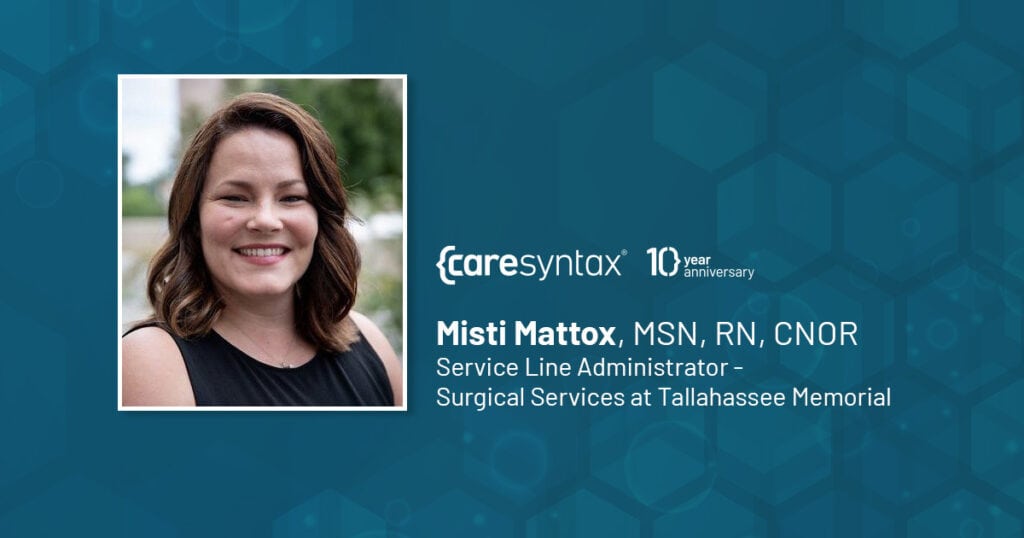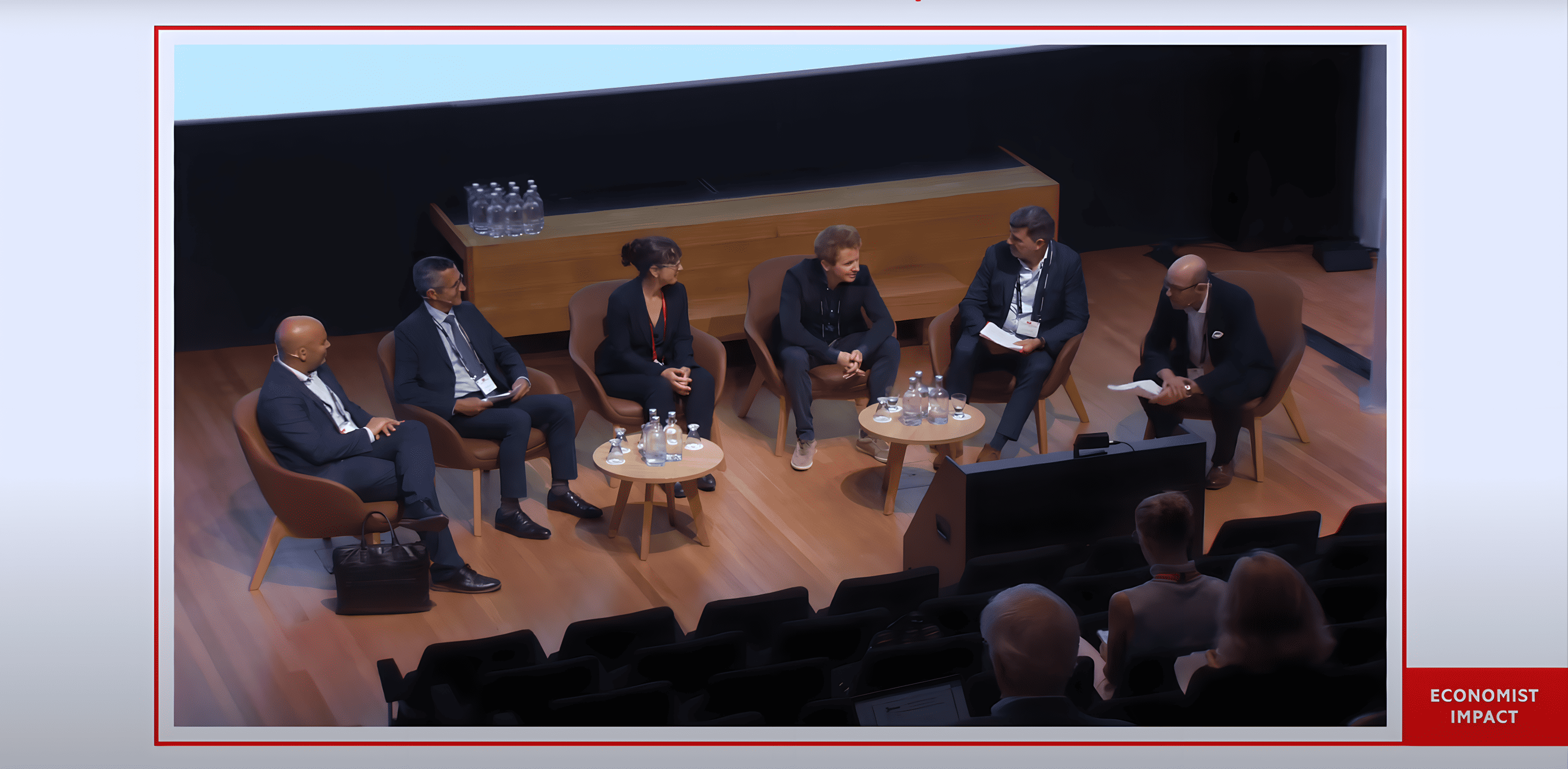
Blog
5 Tips for Unlocking Potential & Reducing Chaos in Your OR
Read More

Caresyntax Blog
January 11, 2024
Bjoern von Siemens, Caresyntax Co-Founder, Chief Financial Officer and Chief Business Officer, recently joined a panel discussion hosted by the Economist. This blog highlights his thoughts on designing sustainable and resilient surgical suites for the future.
Surgery is an important area where we can reduce waste and move toward a more sustainable system. I think sustainability is making sure that we have access to healthcare for the population at an affordable rate, and by using the resources we have most efficiently and concretely.
In the surgical space, we are working on assessing the capacity of the system: the capacity of people, the number of operating rooms, materials, and supply chain and then making sure that we use that capacity and these resources to serve the population most efficiently.
At the end of the day, it’s very challenging but it’s also an opportunity to get a lot of funding into the system for innovation that drives sustainability. We see a lot of government funding moving into sustainability, into reducing carbon emissions, and we find ourselves in an interesting position as a tech company to receive part of that funding because we contribute to that objective.
It’s important to look to industry partners to help solve for this because hospitals have enough to do. They have staff burnout and other issues that are more pressing, so pushing it on the on the providers is not the right approach. If we are able as an industry and from the policy side as well to really use this approach to get more funding into the system, then it’s a good opportunity. It requires thinking longer term if we’re going to move to a more sustainable, well-rounded, and high-value approach.
The adoption of technology from our perspective is critical. The first step is collecting the data and information about how resources, people, infrastructure, consumables, and medtech devices are used.
Technology is crucial– it is very important–but the way we adopt technology, the way we put efficiency in technology, and all the solutions being place at the right time will also be important. The adoption of technology from our perspective is critical. The first step is collecting the data and information about how resources, people, infrastructure, consumables, and medtech devices are used. Then with that we can then gather the information and understanding of how to become more efficient very concretely.
Relyens Group, a pan-European risk manager and insurer is giving hospitals money to invest. These hospitals are using the Caresyntax surgical intelligence platform to create an environment of data collection and utilization. Day by day they are collecting more data to have a better understanding. Then they can adjust how to use resources better and how to reduce the waste that is a big part of the system (empty rooms, wasted supplies, etc.).
How do we do that? Caresyntax is working with hospitals but we’re also bringing in insurance companies. They have been the first ones to take this approach. Reinsurance companies really care about the long-term view but also about the risk aspect in surgery, which is significant. They are willing to finance that and to put money into hospitals for innovation. A French company, Relyens Group, a pan-European risk manager and insurer is giving hospitals money to invest. These hospitals are using the Caresyntax surgical intelligence platform to create an environment of data collection and utilization. It’s incremental, so day by day they are collecting more data to have a better understanding. Then they can adjust and understand how to use the resources better and how to reduce the waste that is a big part of the system (empty rooms, wasted supplies, etc.).
There is a willingness to move, but we have to work on very specific problems. In surgery, that means focusing on specific therapies such as orthopedics or minimally invasive, or robotic surgery, where you can really demonstrate the impact. As those efficiencies are shared more widely, other hospitals will join and government as well, to increase funding these tech-enabled initiatives.
It’s not about technology and funding, it’s really about the human. If you think about designing a sustainable system, you really need to put the patient and the caregiver in center and empower them. That’s why approaching this via data is massive. We are working internationally in the US, Europe, and now Caresyntax is in the United Arab Emirates (UAE) where they have a near perfect patient record–so they have the genomics, they have all the radiology, everything in one place. This is an absolute dream for any data scientist. And, as a result, the people are able to manage their health differently because everybody has the same access to their data. They are able to compare with their neighbor, they can access and see their health records. Health data is a safe, compliant, and very powerful tool that brings the human element back between the provider and the patient.
Most doctors are spending a large amount of time on computers filling out forms. That’s not why they studied medicine. The scope for improving and creating a more sustainable healthcare system lies in how we can better use technology. We can use technology to get rid of as much of that burden as possible, which would contribute to making the whole system a bit more sustainable and keep clinicians motivated. The key is involving general managers or CEOs of hospitals. Ask them what problems they’re facing, ask them what solutions they have, and sometimes the solution is right there on the table, it’s just not getting implemented. Implementing new technology and new systems is complicated and it takes a lot of time and effort.
The savings that almost always comes out of innovative technology implementation can show that by putting time into those improvements, it frees up time for themselves and their colleagues. In terms of staff well-being and staff retention, eliminating time spent on low value administrative duties can free up more time to spend on more complex interactions with patients and that’s what gives meaning to their work.
Staff and staff time is useful currency, but not all have time to invest to make the necessary changes. The savings that almost always come out of innovative technology implementation can show that by putting time into those improvements, it frees up time for themselves and their colleagues. In terms of staff well-being and staff retention, eliminating time spent on low value administrative duties can free up more time to spend on more complex interactions with patients and that’s what gives meaning to their work.
Caresyntax is the only vendor-neutral, enterprise-scale surgical intelligence platform you need to make surgery smarter, safer, and more profitable. We offer software, analytics, and professional services solutions across the entire surgical continuum. To learn more, subscribe to Caresyntax Smart Surgery or schedule a demo.
This blog is an excerpt from the Future of Health Europe Economist Impact Events panel discussion hosted on 30 October 2023, “Designing sustainable and resilient health systems for the future” with a panel that included Bjoern von Siemens, Co-Founder of Caresyntax. To view the complete discussion, visit Economist Impact Events on YouTube.